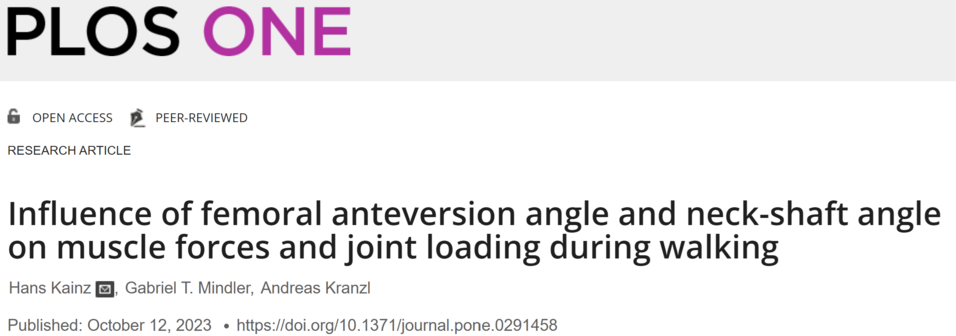In collaboration with Dr. Mindler and Dr. Kranzl from the Orthopedic Hospital Speising, Dr Kainz conducted a musculoskeletal modelling study and showed how altered proximal femoral geometries influence muscle and joint contact forces during a typical gait pattern. They showed that increased joint contact forces in models with increased anteversion and neck-shaft angles are linked to changes in hip muscle moment arms and compensatory increases in hip and knee muscle forces. Their findings might help to explain clinical observations, e.g. pain, degenerative joint diseases, and why a typical gait pattern is problematic in some patients with femoral deformities.
We invite you to explore the full paper published in PLOS ONE to dive deeper into this research topic.
Kainz H., Gabriel Mindler, Rudolf Ganger, Andreas Kranzl (2023) Influence of the femoral anteversion angle and neck-shaft angle on muscle forces and joint loading during walking. PLOS ONE, 18 (10), e0291458. https://doi.org/10.1371/journal.pone.0291458

